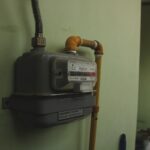Learning CPR can mean the difference between life and death, making it a vital skill for individuals in both professional and personal settings. CPR courses provide the necessary training to equip people with the skills and confidence to perform CPR effectively.

Why CPR Training is Essential?
- Immediate Response: In cases of cardiac arrest, the first few minutes are crucial. Immediate CPR can double or even triple the chances of survival by maintaining blood flow to the brain and other vital organs until professional medical help arrives.
- Widespread Occurrences: Cardiac arrests can happen anywhere and to anyone, regardless of age or health status. Being trained in CPR prepares individuals to respond effectively in various environments, from home and workplaces to public spaces.
- Empowerment and Confidence: Knowing how to perform CPR can empower individuals to act confidently and decisively in emergencies. This not only enhances personal readiness but also contributes to a safer community where more people are prepared to assist in critical situations.
Structure of CPR Courses
CPR courses Perth are designed to be comprehensive yet accessible, providing learners with both theoretical knowledge and practical skills. The typical structure of a CPR course includes:
- Introduction to CPR: The course begins with an overview of the importance of CPR and the basic principles behind it. Learners are introduced to the situations where CPR is necessary, such as cardiac arrest, drowning, or choking.
- Basic Life Support (BLS): BLS is a primary component of CPR training. It includes techniques for chest compressions, rescue breaths, and the use of automated external defibrillators (AEDs). Learners are taught the correct hand placement, compression depth, and rhythm to ensure effective chest compressions.
- Hands-On Practice: Practical, hands-on practice is essential for mastering CPR skills. Courses provide mannequins and AED trainers to simulate real-life scenarios. This practice helps learners develop muscle memory and ensures they can perform CPR accurately under pressure.
- Assessment and Certification: To ensure competence, CPR courses typically include an assessment component. Learners must demonstrate their ability to perform CPR correctly and confidently. Successful completion of the course results in certification, which is often valid for two years and recognized by various health and safety organizations.

Key Components of Effective CPR Training
- Chest Compressions: High-quality chest compressions are the cornerstone of effective CPR. Training focuses on achieving the correct depth (about 2 inches for adults) and rate (100-120 compressions per minute) to maintain blood circulation.
- Rescue Breaths: While chest compressions are vital, rescue breaths also play a crucial role in providing oxygen to the lungs. Learners are taught to give two breaths after every 30 compressions, ensuring that the airways are clear and the breaths are effective.
- AED Usage: Automated external defibrillators (AEDs) are devices that can deliver a shock to restore a regular heart rhythm. CPR courses include training on how to use AEDs, including pad placement and following the device’s prompts.
- Adaptations for Different Populations: CPR techniques can vary slightly depending on the age and size of the victim. Courses cover adaptations for infants, children, and adults, ensuring that learners are prepared to assist individuals of all ages.
















